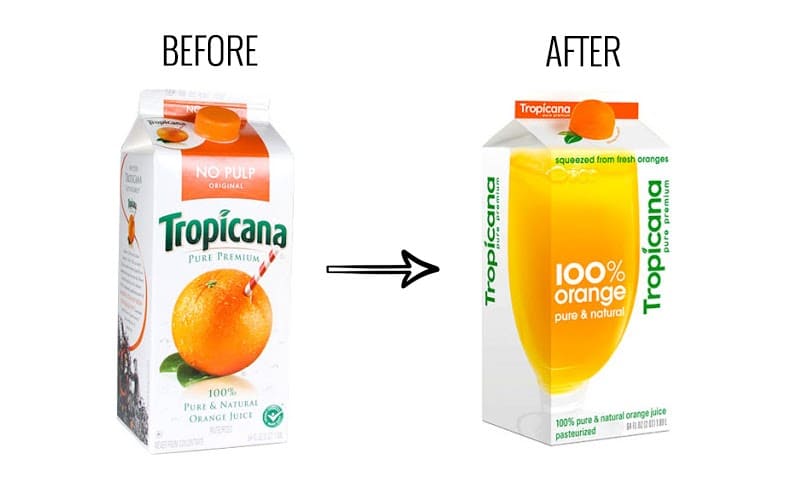How Poor Rebranding Impacts Customer Trust

Table of Contents
So you opened your website! Woohoo! You’ve got your logo, brand colours, brand image and have started to gain a loyal customer base. So what happens if down the line you choose to rebrand your visual identity?
Before we discuss some risks to rebranding, let’s dive into why you may be interested in rebranding your company in the first place. Could it be that your company is shifting focus and looking to communicate that with your customers? Or maybe, like many companies, you are looking to modernize your brand to attract new customers and to convey that your company will stay innovative. No matter the reason, a company rebrand is no light decision to make.
When a rebranding is effective, your company can expect a larger customer base and increased revenue. When you are unsuccessful in rebranding, you risk lost revenue for your company, as well as lost trust in your loyal customer’s minds.
Why? Let’s get into it.
Lost Identity with Existing Customers
Often, companies that choose to rebrand themselves want to make a significant change; otherwise, what’s the point of putting time, effort and money into it? If your company is looking to alter key brand identifiers such as the logo, brand colours, slogan, etc., remember that consumers are often resistant to change, especially when it happens all at once.
When determining how to rebrand, focus on your company’s mission, values, and brand culture you want to keep. These factors are often the main contributors to customer trust and brand loyalty.
Once identifying the characteristics that you want to implement into your new designs, remember that less is more. Changing all branding elements such as the logo, slogan, colours, and image can leave your customers feeling detached from the brand or they may not recognize the brand at all.
An example of a company that failed to rebrand its product was Tropicana, an orange juice company. In their rebranding, they opted to modernize their packaging and brand image, altering every aspect of their packaging, keeping no recognizable elements other than colour. This caused many customers to not recognize the product and saw it as a generic brand, reducing the company’s revenue significantly.

Tropicana missed the mark on connecting with its existing loyal customer base. Their traditional brand has a sense of familiarity and “Home”, evoking an emotion leading to loyalty. When that was altered to a modern, generic design, customers questioned the company’s understanding of who they are. Although being an incredibly established brand, Tropicana failed to perform market research to gauge the public response to their new design. If they had spoken to their customers, it could have saved them the expensive and damaging mistake.
When the company returned to their previous design, it realized that customers enjoy tradition and consistency in a brand. As mentioned above, always ensure that you focus on what your customers cherish about your brand and go from there. Every company is different!
Emotional Connection with Company Brand
Customers have an emotional connection to your brand, specifically your logo. A drastic rebrand could leave your customers not recognizing it, and disconnected from their once beloved company. A customer’s brand trust is like any other relationship; it requires time to build and consistent maintenance.
When working proactively to ensure that your customer is satisfied before problems arise, you are ensuring that the customer has a brand that understands and ensures that their needs and wants are being met.
So what can you do?
- Ask your customers what they find appealing from your brand and what helps them identify your brand. This could help you identify what your customers respond to.
If rebranding is your goal, remind your customers that the brand they know and love will not change its core pillars and what produced the strong customer loyalty.
An example of a company that failed to rebrand its product due to a misunderstanding of its brand's emotional connection with its customers is The Gap. Like many other older companies, the retail brand focused on modernizing their company in an effort to stay relevant. They ended up with a basic logo that looks like everyone else, giving them no differentiation.
 Why did this happen?
Why did this happen?
When rebranding any company, the goal is to shift the image and practices of the company. Whether it be through new products or a new personality, the logo is not what you start with. The Gap’s marketing strategy should have started with changing its product positioning and moving incrementally towards a logo unveil. For their customers, there were no signals to any change and the company’s logo reveal surprised them all.
The significant change in logo design confused many customers as the company changed its visual identity. Simply put, your company’s logo is a visual representation of trust and serves as a connection point between the company and the customer. What was once a reliable company with an "iconic" logo was a brand new company with no personality and no emotional connection.
Final Thoughts
Rebranding your company is a delicate art form, so take your time. When you start your process, remember that this change will send your company into a new stage in its growth; so make change with a purpose. Never change for change’s sake., you are more likely to be successful when you thoughtfully design your rebrand and what the brand will communicate with your customers.
And don’t just think about your customers, talk to them! Always prioritize your customers and their needs through extensive, quality market research. So send out surveys, hold focus groups, ask thoughtful questions. Remember to focus on the qualities that helped build the trust your audience felt in your brand from the outset. Only then will you have the confidence to move forward in your new direction, with data to back up your vision.
Overall, rebranding poses some risks., so focusing on your brand and business strategy is key. How your customers identify with your company will change how to brand yourselves. After all, the customer is always right!
Ready to see some gains in your own privacy policy? Build trust with Enzuzo.

Mate Prgin
Mate is the CEO & Founder of Enzuzo. He has an executive MBA from Ivey Business School and is a subject matter expert in data privacy and compliance.
